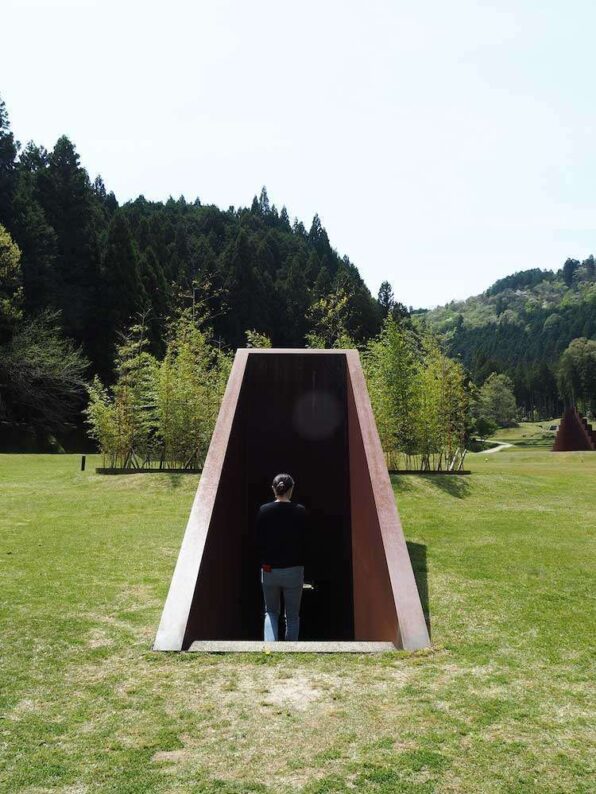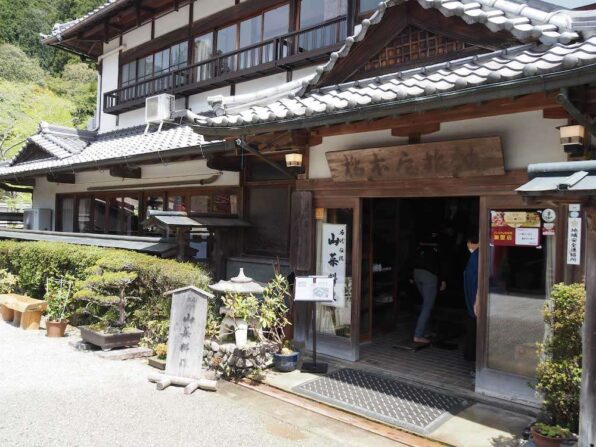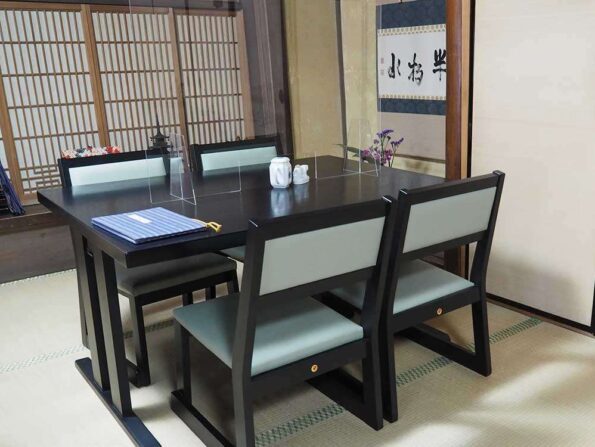It's that time of year when the trees are getting greener and greener, and when you're driving along, you can’t help but turn up the volume on your car stereo one notch and roll down the windows.
It was a weekday, but the weather was so nice that I decided to go out with my friend for a walk in the park, maybe after a fancy lunch. So, we went to Murou, Uda City (Nara Prefecture). We left Nabari (Mie Prefecture) around 10:00 a.m. In about 30 minutes, we arrived near Murou-ji Temple, one of the most famous temples in the area. It was still too early for lunch, so we drove to the “park” first.
Our destination was Murou Art Forest, which is not just a park as you might imagine, but an outdoor art space of 7.8 hectares. It is slowly gaining popularity as an Instagrammable spot, and you’ll know why as you read this on.
The entire park is an open-air museum
We paid the admission fee and entered the park. Then I saw the green hills, lush trees, and beautifully landscaped space before me... I couldn’t help but sigh.

As we proceeded further...
You can actually get inside of this art piece, “Spiral Bamboo Forest.”

The first thing that overwhelms me was the presence of the monuments scattered around the large site. Those artworks and the surrounding nature are so harmonious that it’s hard to tell which part is the art and which part is the original nature. The sculptures are designed to blend into the natural terrain. It even reminded me of the “borrowed scenery ” found in Japanese gardens.
Not only the sculptures, but I found the surrounding forest was also part of this installation. Wood chips are paved nicely on the ground to make people comfortable when they walk in the woods–– It was soft––but it just looks so natural and beautiful.
So, there is no boundary between the artworks and the original nature. They instead fuse into one complete environmental art piece like color gradation.
That is the concept of Murou Art Forest: Space that symbolizes “harmony between nature and culture.”
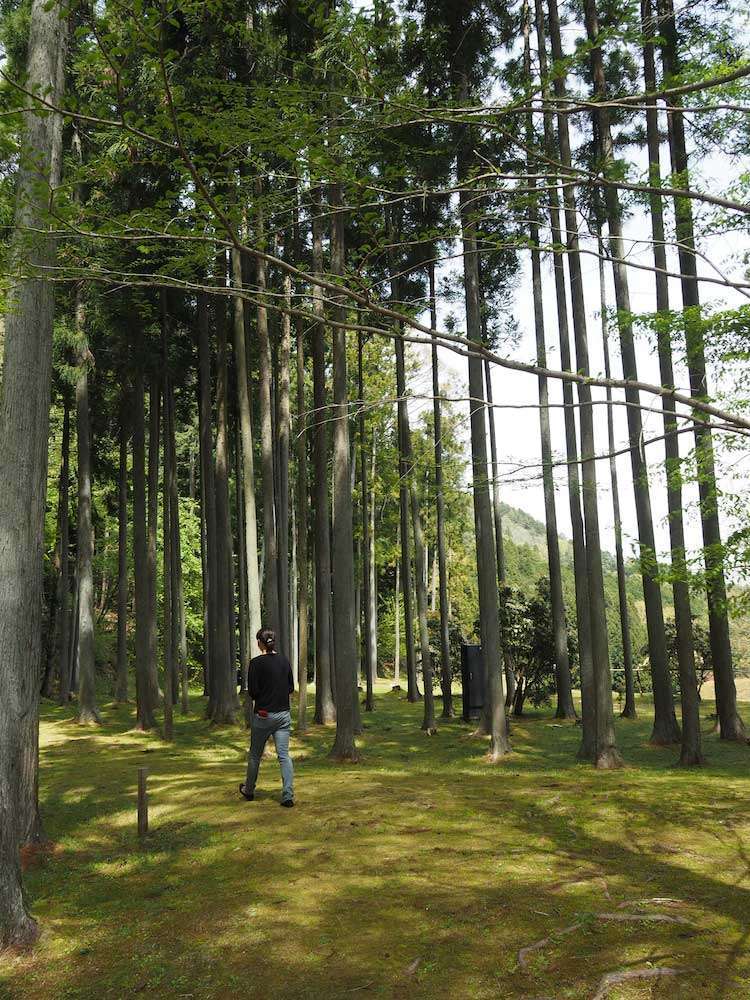
Designed by Dani Karavan, an Israeli sculptor
The mysterious reddish-brown monuments are the works by the Israeli sculptor Dani Karavan. In Japan, Hokkaido, Kagoshima, and Murou, Nara (here) have his environmental sculptures (according to Dani Karavan's official website ). If you live in or travel to the Kansai or Tokai region and are interested in his work, you should visit the nearest one, Murou Art Forest.
Okay, let me introduce you to some of my favorites from his work.
The Second Island (Isle of Pyramid)
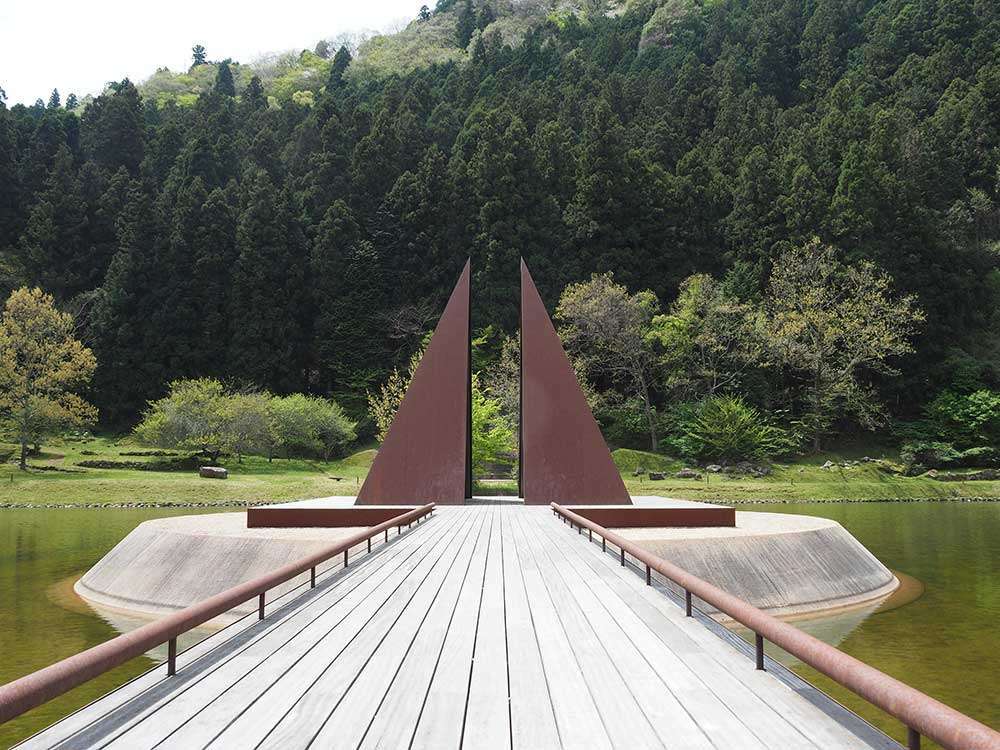
A mysterious pyramid built on an island floating on the water: The pyramid is divided into two parts, allowing you to enter. Once inside, the dazzling green scenery outside was suddenly replaced by a quiet, dark space in front of me. I felt like my consciousness, which had been focused on the outside, was pulled back into my own inner self. Then, I looked out through a slit in the pyramid. The view was cut out as if I were looking through a viewfinder and felt mind-opening. I just couldn't help but take pictures.
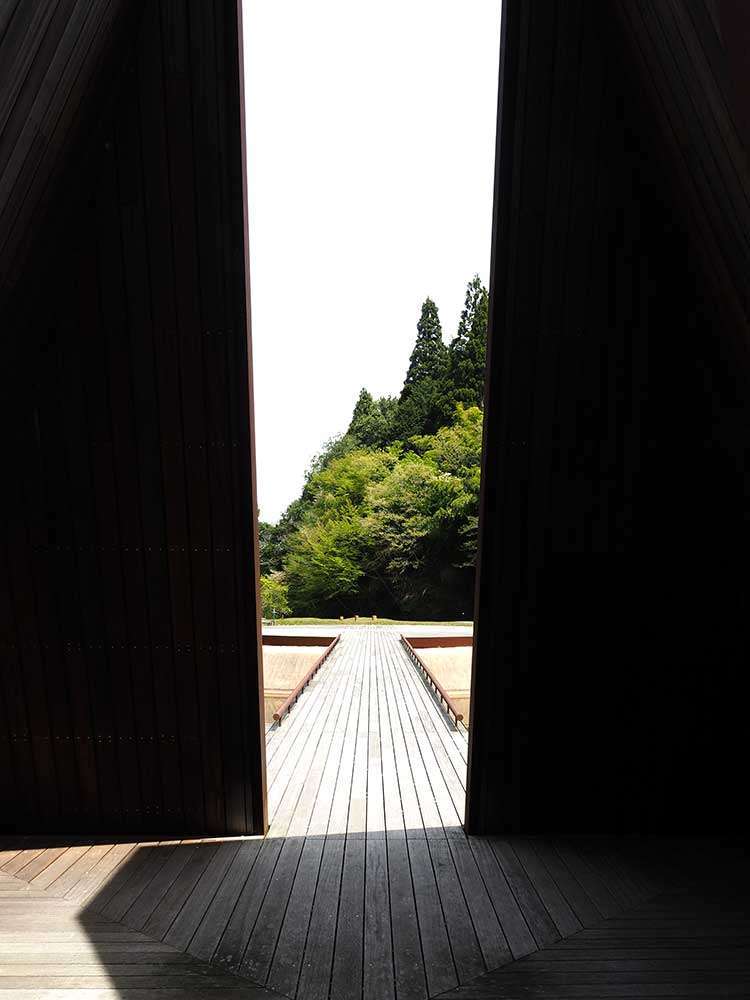
The Third Island (Isle of Stage)
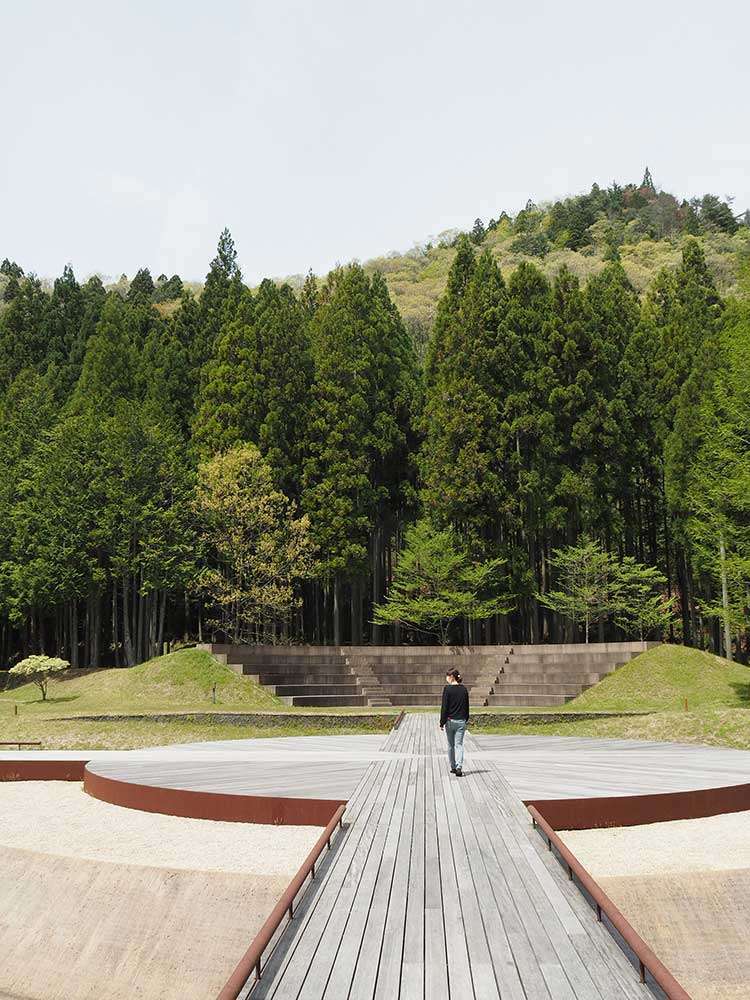
This island is connected to the second island by a wooden path and has a stage where live music and other events can be held. In 2018, the Israeli band Butterring Trio was invited to perform here (unfortunately, I couldn’t make it though).
Isle of the Sun and Path of the Sun
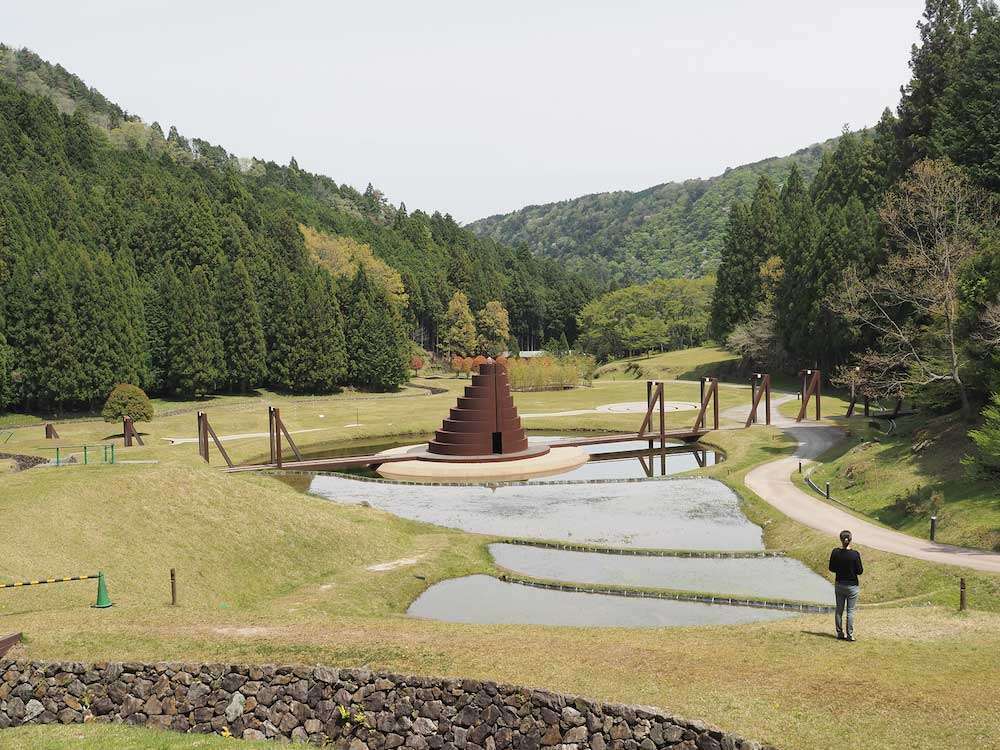
I personally like this piece the best. This stair-like monument is called “Tower of the Sun.” The extended wooden deck stretching from it represents “Path of the Sun,” which is closely related to this East Nara Nabari area. The “Path of the Sun” is said to have something to do with the ancient sun worship because many important religious sites line up at latitude 34°32’ north. For example, Mt. Miwa, Hase-dera Temple (Sakurai City, Nara Prefecture), Saiku (Meiwa Town, Mie Prefecture), Murou-ji and Mt. Kuroso (Soni Village, Nara Prefecture) in East Nara Nabari are located on the “Path of the Sun.” And the “path” of this work also runs along latitude 34°32’ north.
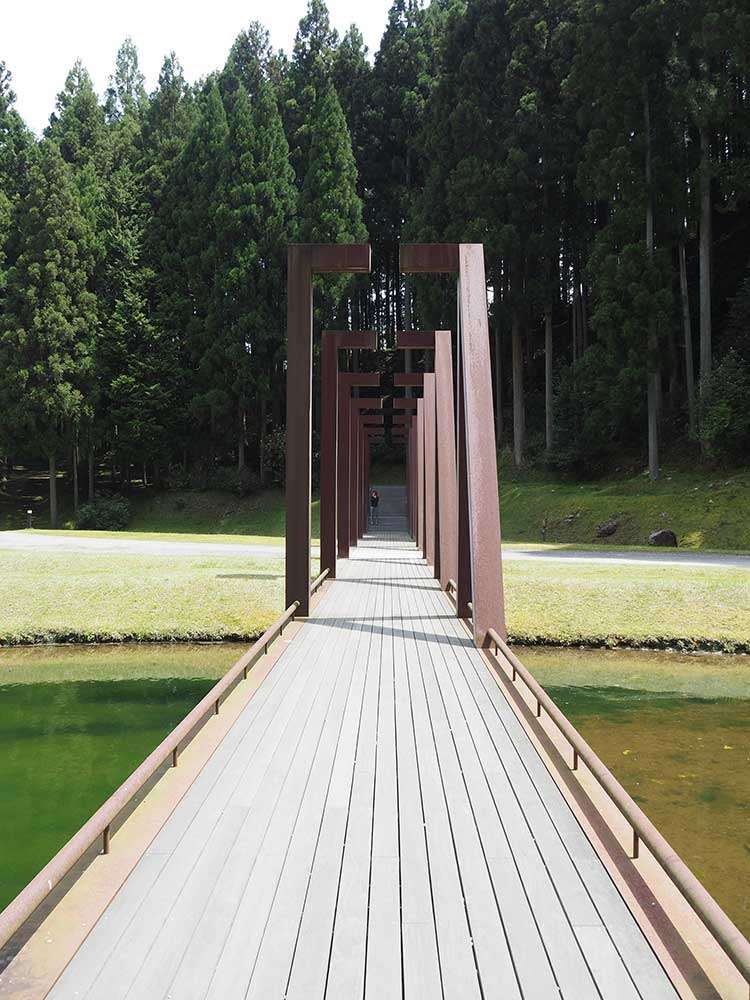
This dynamic installation transcends time combining ancient beliefs in the sun with modern art. I hope that this work will help more people learn about mysterious aspects of this region as well as its rich history.
There are more of his works than the three that I introduced here. So visit the site to “experience” these works by climbing, walking on, or getting inside of them.
You can’t skip Murou-ji Temple!
After enjoying the art, it’s lunchtime! Since we had come to Murou and spring is the season for sansai (wild mountain vegetables), we decided to have sansai dishes. There are two restaurants near Murou-ji Temple that serve sansai cuisine. This time we went to Hashimoto-ya (the other one is Nakamura-ya)
Left: Murou-ji Temple is on the left. Right: Acrylic panels are installed on the table to help prevent the spread of Covid-19.
We were led to a tatami room to dine. All the tables were seating with chairs! I thought it was very nice and considerable of them, for some people are not used to or cannot sit on the floor.
We had one of the sansai teishoku (wild vegetable set meals). Dish by dish, we enjoyed the freshness of the ingredients. All the food was so delicious with a mild but rich taste of dashi (broth).
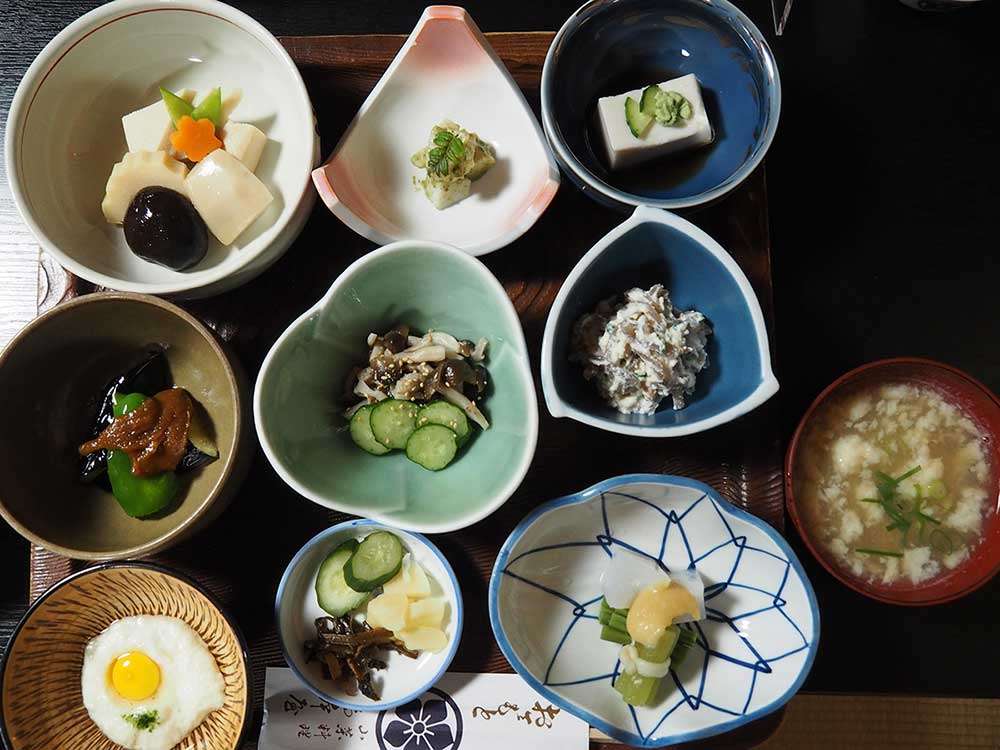
After a long lunch break, we were paying the bill to go straight home.
“Are you going to visit Murou-ji now? said the restaurant owner.
“No, we’re leaving,” we said.
“What!? Are you sure? You should definitely go see the beautiful rhododendrons! The peak season will be over soon, but they’re so beautiful this year. So you can’t leave here without seeing them!” he said.
Okay, why not! So we did as he told us. Here is a photo of the visit.
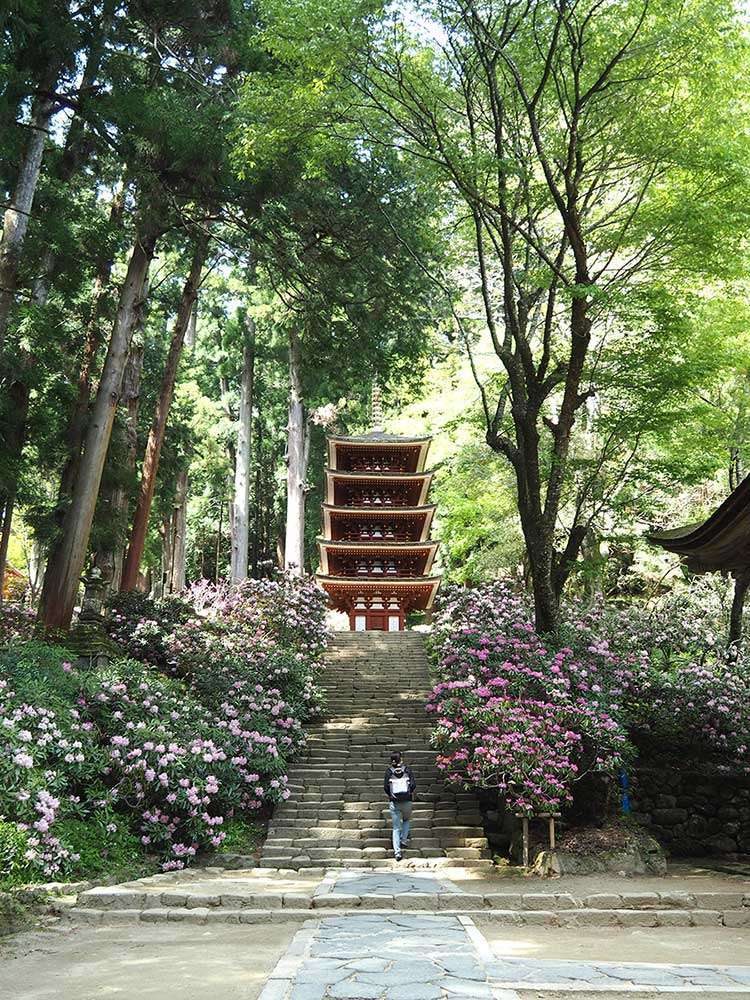
He was right! So glad we visited there. It was such a great day.
How to get to Murou Art Forest
There are two gates to Murou Art Forest. One is the south entrance where the visitor center is located, and the other is the north entrance where the administration building is. Parking is available on both sides. Just be careful, as only the north entrance is open on weekdays. We entered from the north that day.
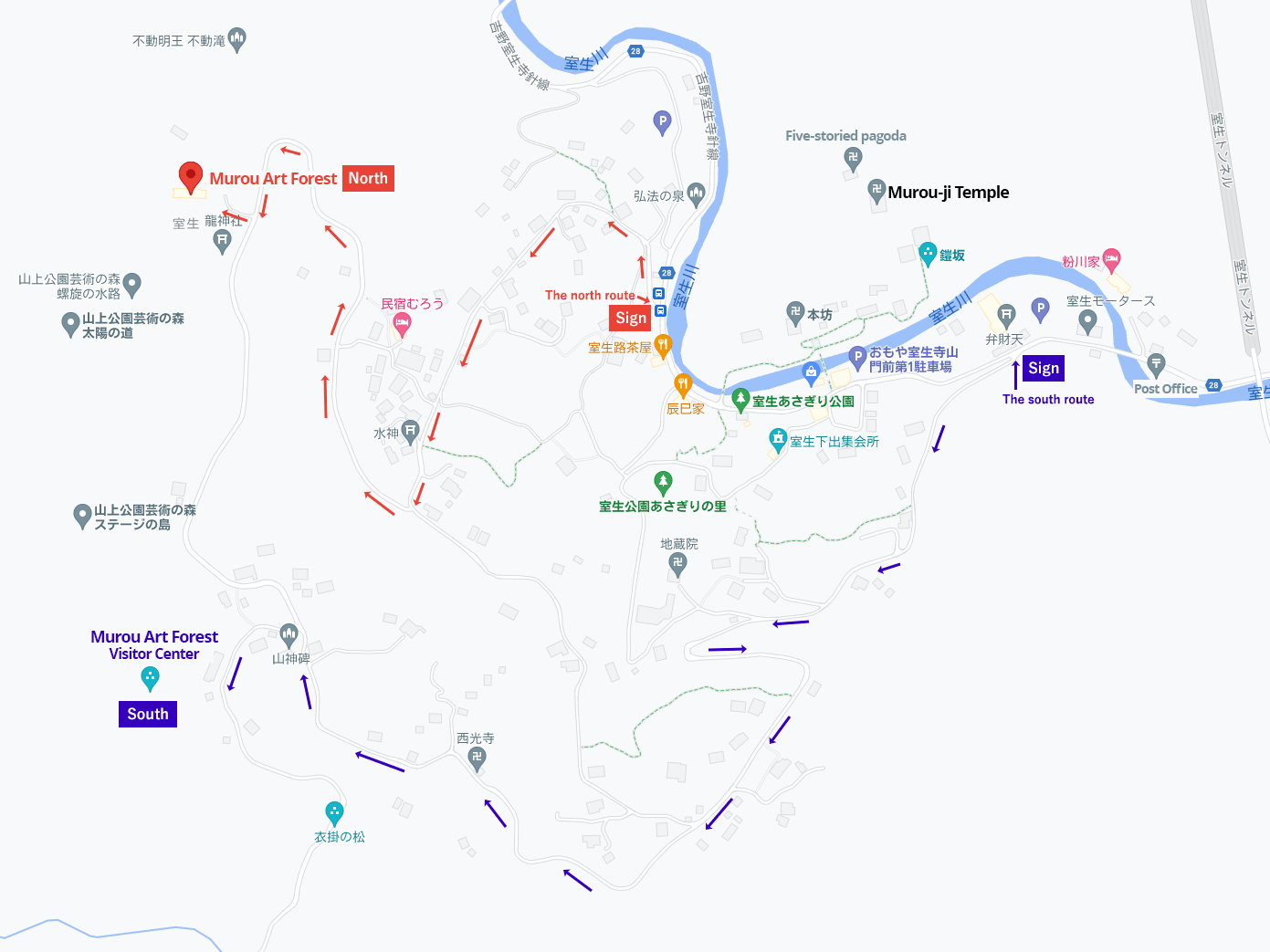
As you drive slowly on the approach to Murou-ji Temple, you will see a few narrow paths leading to the mountainside. The two of them with the signs saying “Murou Art Forest” take you to the site. To get to the south entrance, look for the sign on the south of Murou-ji Temple. To go to the north one, look for the other sign on the north of the Temple. I should remind you that the path gets narrow toward the destination, but don't worry, you’re on the right track. It can also be walkable from Murou-ji Temple. It's about 20 minutes walk on a hilly route. If you like hiking, you might want to consider it. If you don't, just hop on a car!
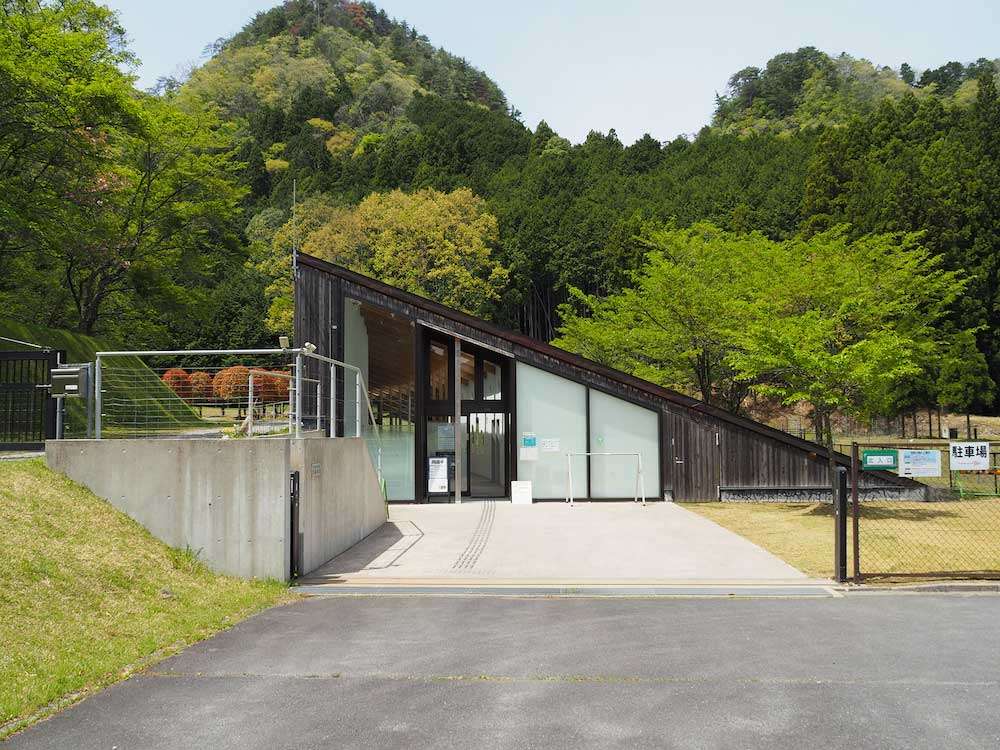
Please note: The titles of the artworks are translated by the author. They may be different from the official English titles.
- Murou Art Forest
- Address: 181 Murou, Uda City, Nara Prefecture
- Access: Get off at Kintetsu Muroguchiono Station. Take the bus for “Murou-ji (室生寺)” and get off at the final bus stop “Murou-ji (室生寺)”. Walk 20 minutes / Get off at Kintetsu Nabari Station to rent a car. Drive 30 minutes.
- More information on this site. Visit here to find open hours and fees.
- Official website (in Japanese)
- Dani Karavan
- Official website
- Hashimoto-ya
- Official website (in Japanese)
- Murou-ji Temple
- Information on this site

